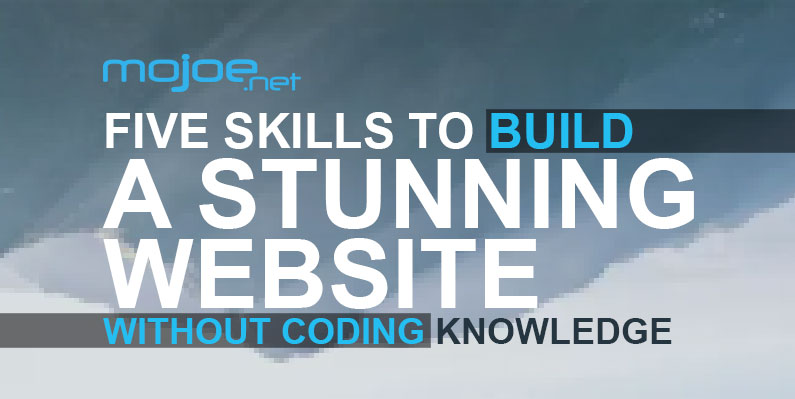For small businesses and individuals without coding know-how, building a website can be intimidating. We often give the responsibility of building our brand’s site to developers (for good reason) because they have the skills needed to create a dedicated site.
However, there are a few drawbacks when you aren’t involved in building your site.
• You may struggle to make future changes and need to ask a third party for help time and again.
• It’s possible for your brand to lose some of its “essence” when you hand the reins to someone else.
Today, it’s easier than ever before to build a site on your own. There are content management systems like WordPress and thousands of themes and plug-ins in the ecosystem. You also have access to virtually any information you need to build the site you want thanks to the internet.
It’s helpful to be aware of the specific skills you’ll need to build a well-rounded website. So, let’s outline the many elements or skills that go into making a stunning site that also grows your business.
1. Managing A CMS
Thanks to content management systems (CMS), you can build a modern website without knowing a whit of coding. I recommend WordPress for several reasons:
• It powers millions of websites.
• There are thousands of plug-ins and themes to customize your website.
• WordPress is an open-source software that’s being updated by the world’s best developers, so you can always look “under the hood” and check its security systems.
• It’s user-friendly and has a short learning curve.
• It’s free.
There are plenty of resources available for learning how to use WordPress to create the site you’d like. I’d suggest using blogs and online courses to learn how to get started.
2. Content Writing And Copywriting
Writing for the internet (i.e., your website) is vastly different from writing an email, a book or even a social media post. When you’re filling up your website with information, you’re writing to boost your SEO and give relevant information to impatient web users who scan rather than read. This means that you need to learn best practices for writing content that converts and helps you rank well in search engine results. Here are my tips:
• Always do your keyword research and make sure you add your keywords or phrases in the title, at least one heading and a few times in the body.
• Use short and simple sentences, and adopt a conversational tone of voice. Pretend that you’re speaking to a friend, and let that voice shape your writing.
• Focus on the benefits of your solution and not the features.
• Structure your writing so that it’s divided into sections with subheadings that tell readers what that paragraph is about.
• Don’t make a paragraph longer than four lines.
3. User Experience
While platforms like WordPress make website building easy, it does not mean that your site will be user friendly. You need to learn about the principles of user experience (UX) and user interface design (UI).
This is quite a comprehensive subject to cover, so I’d suggest taking a course on Udemy to gain in-depth information about how to build a site that’s easy to navigate. You’ll learn about things like spacing, progressive disclosure, the proper use of colors, contrast and a whole lot more.
4. Typography
Having a basic understanding of letter sizes, spaces and combinations matters. When building a site, many people get drawn to fancy fonts that look pretty but aren’t readable for long periods of time.
Remember, that your readers are likely squinting at a small mobile screen when they’re reading your content. So, again, consider taking an Udemy course or looking up blog articles on typography.
You’ll learn about font pairing, using ratios for your heading sizes and the space between lines. All you need are two fonts for the headings and the body of your posts on your site. Choosing the right pair can be challenging, however, which is why you need to be aware of typographic principles.
5. HTML And CSS
I know I said that you don’t need any coding — but you do a little bit. While WordPress can do virtually anything if you’re opting for a free theme or one with limited flexibility, you’ll need to know some HTML and CSS to make tiny and fine tweaks. Some of these changes could include changing the color of a border or piece of text.
You may also find, from time to time, that you’ll need to insert snippets of code into WordPress for added functionalities. It’s not possible to entirely escape using some simple coding to alter your site.
But, not to worry. HMTL and CSS are the simplest coding languages, and you’ll often find code snippets that you can copy without having to build any code at all. It’s just good sense to be aware of how they work.
Good To Go
Simply setting up a website and getting it live is easy enough, but it’s very likely that you want it to convert readers into subscribers or buyers. In this case, there are more steps or skills needed to make your website into an asset that brings you money.
I’ve covered some of the skills you’ll need to build a great site. It won’t take long to master them, so get started now.
Article Provided By: Forbes


If you would like to discuss Your Logo with Mojoe.net or your website’s analytics, custom logo designs, social media, website, web application, need custom programming, or IT consultant, please do not hesitate to call us at 864-859-9848 or you can email us at dwerne@mojoe.net.


Recent Comments